An Ancient Mosaic of the God of Wine Debuts in New York
The Onassis Cultural Center NY is showcasing four decades of archaeological findings from Dion, the ancient Greek village that tried to get as close to the gods as possible by building shrines and structures on the slopes of Mount Olympus.
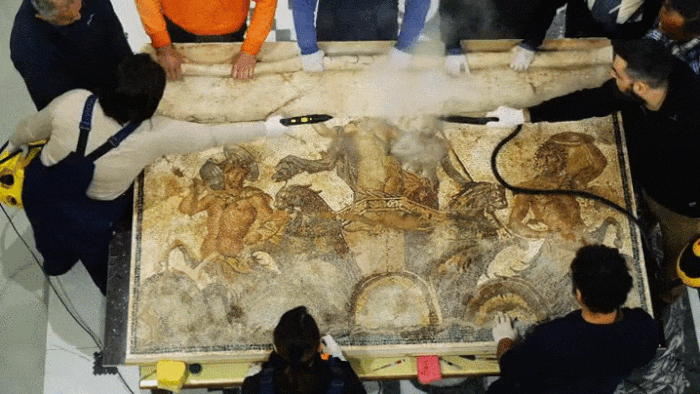
New York City is spoiled with archaeology exhibitions this spring, among them a show of late antiquity textiles at the Institute for the Study of the Ancient World and the Pergamon display at the Metropolitan Museum of Art. But don’t overlook the lower level of Midtown’s Olympic Tower, where the Onassis Cultural Center NY is showcasing four decades of archaeological findings from Dion, the ancient Greek village that tried to get as close to the gods as possible by building shrines and structures on the slopes of Mount Olympus.
Gods and Mortals at Olympus: Ancient Dion, City of Zeus is the first exhibition in the Onassis Center’s newly renovated galleries. All of the over 90 objects in the show, from an imposing 2nd-century CE statue of Zeus to a slab of marble with two footprints from the late 2nd to 3rd century CE, to Iron Age metal jewelry found wrapped on a skeleton, are on view for the first time in the United States. A large Roman Period mosaic that serves as the show’s centerpiece is being exhibited for the first time anywhere. The “Epiphany of Dionysus,” which dates to the late 2nd to early 3rd century CE, is a five-by-seven-foot vision in tesserae of the god of wine rising from the water on a chariot pulled by panthers.

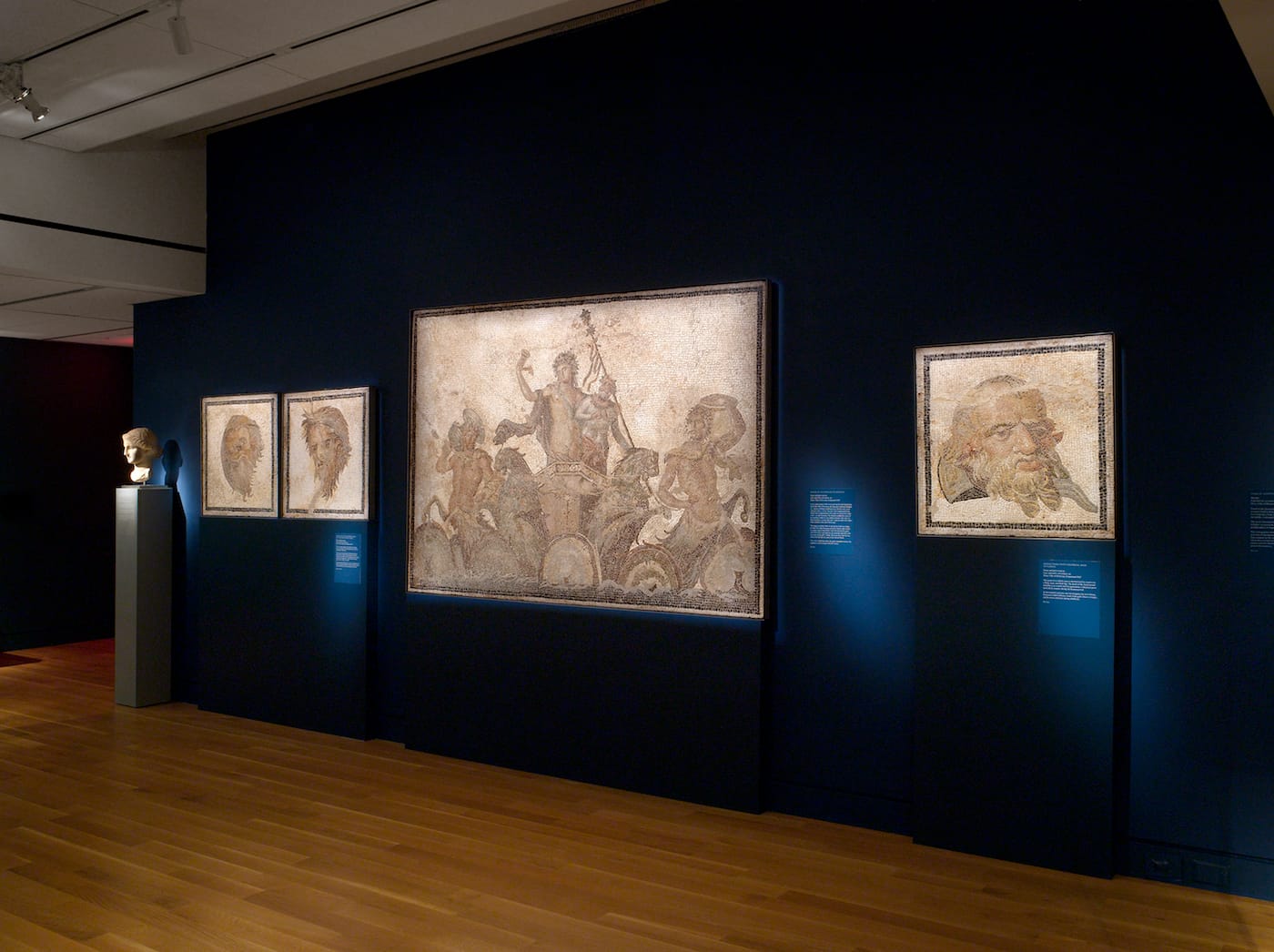
Dimitrios Pandermalis, curator of the new Acropolis Museum, explains in a video from the Onassis Foundation that the Villa of Dionysus, containing the mosaic on its floor, was revealed in 1987. It wasn’t until last year, with support from the Onassis Foundation, that it was able to be removed for conservation and restoration. The Dion site is lushly overgrown, with the mud helping to preserve so many centuries of art and architecture. “Every summer we’ve had a special surprise from the soil of Dion,” says Pandermalis, who’s directed excavations at the site since 1973.
The rediscovery of Dion is attributed to English antiquarian William Martin Leake in 1806, but it’s only in the last four decades that major archaeological excavations have taken place at its temples, homes, and city walls. And the history here is deep: the village boasts early Macedonian shrines and later elaborate architecture when it became a thriving extension of the Roman Empire.
The “Epiphany of Dionysus” is joined in Gods and Mortals by three mosaics that were found alongside it at the site; each features a different mask, perhaps representing the village’s theatrical culture. If you get close to the “Epiphany” mosaic (although not too close; the guards here are very attentive), you can see that its depth is formed by an incredible use of small stone mosaic tiles. Bird songs and the sound of water recorded at Dion play in the background, so although you can’t see the mosaic embedded in the ruins, you can get an auditory impression of the site today.
The video below follows the step-by-step process of the mosaic’s conservation. According to the New York Times, when the mosaic panels return to Dion, they’ll be protected in a new museum where visitors can witness ongoing conservation projects.
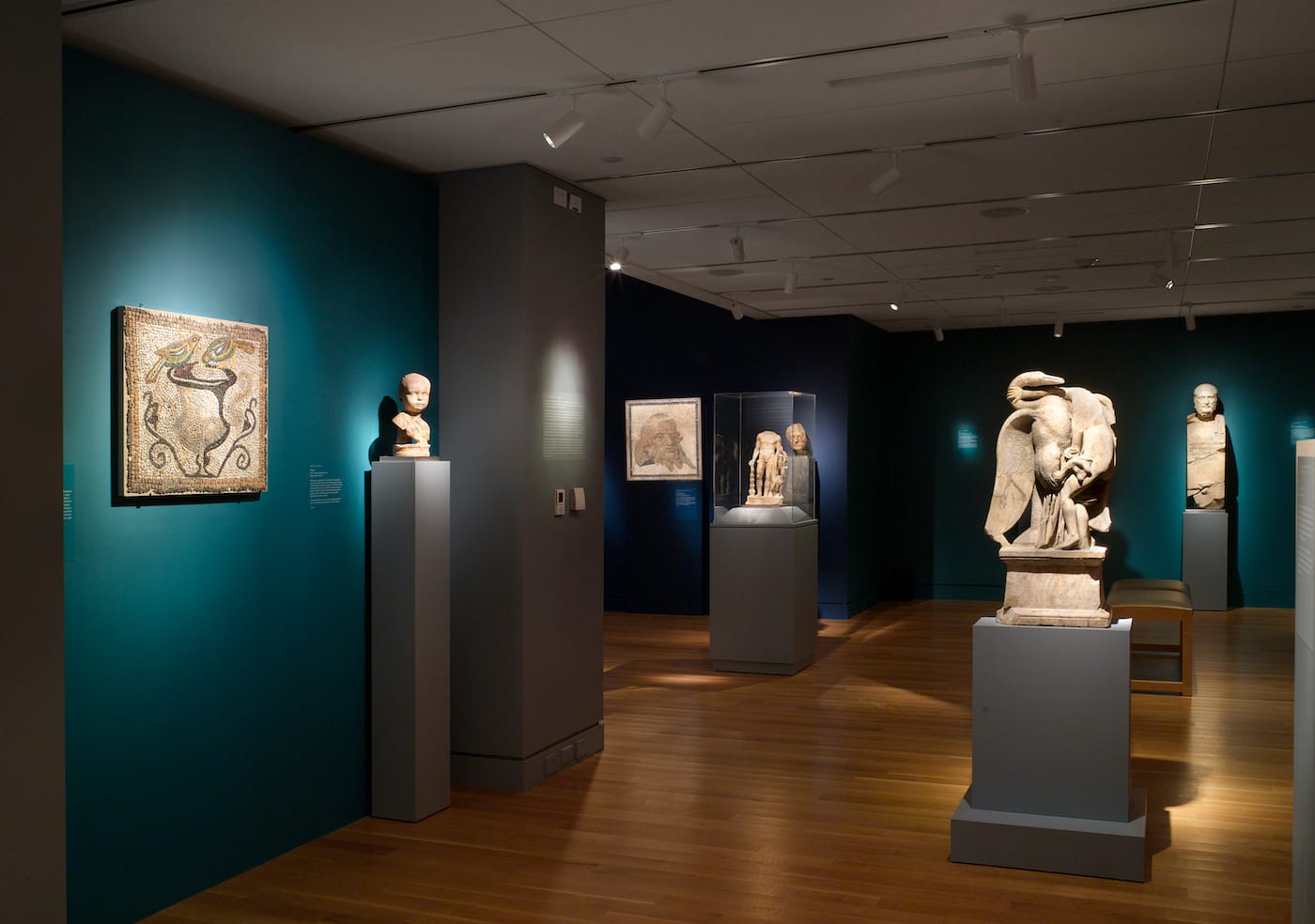
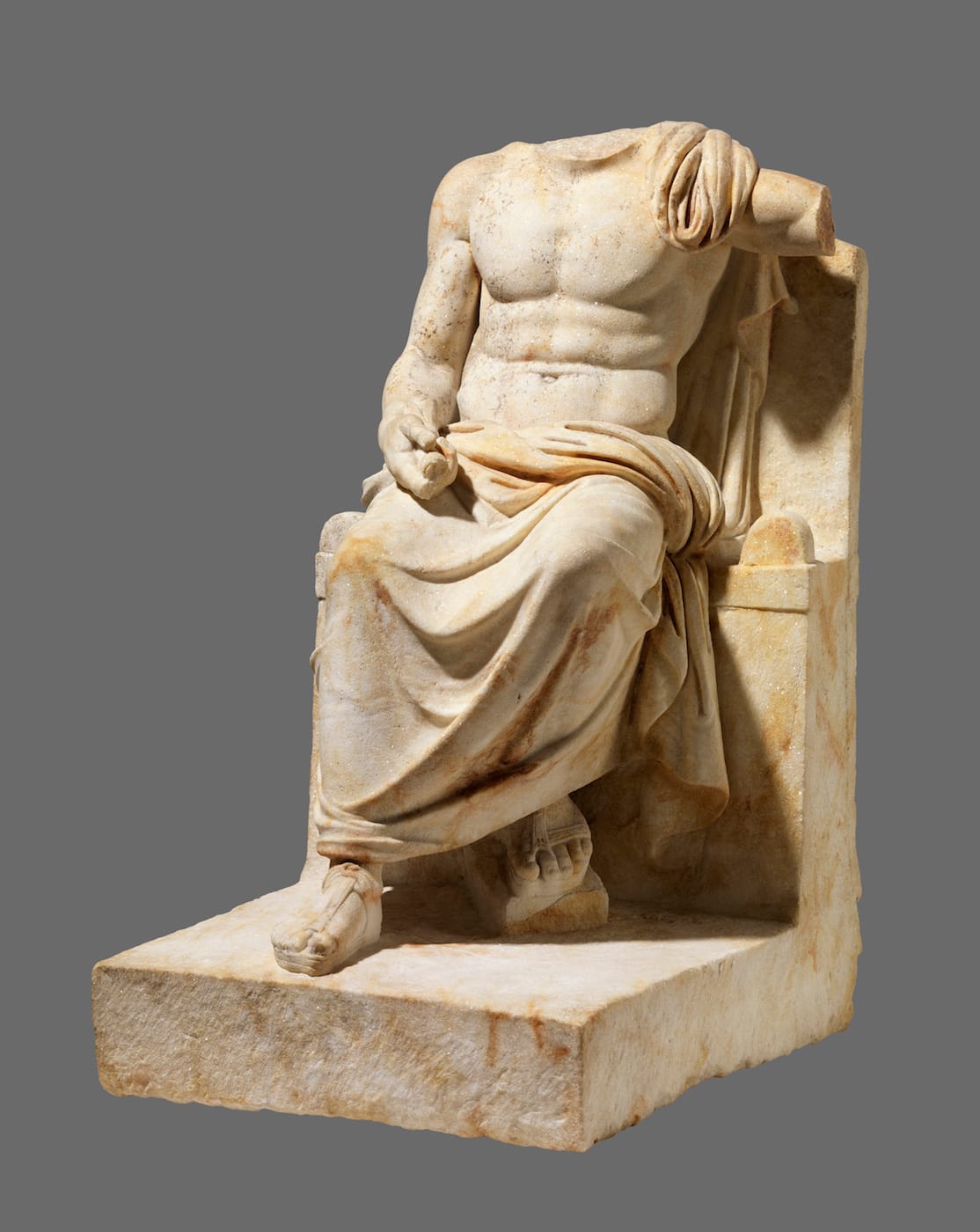
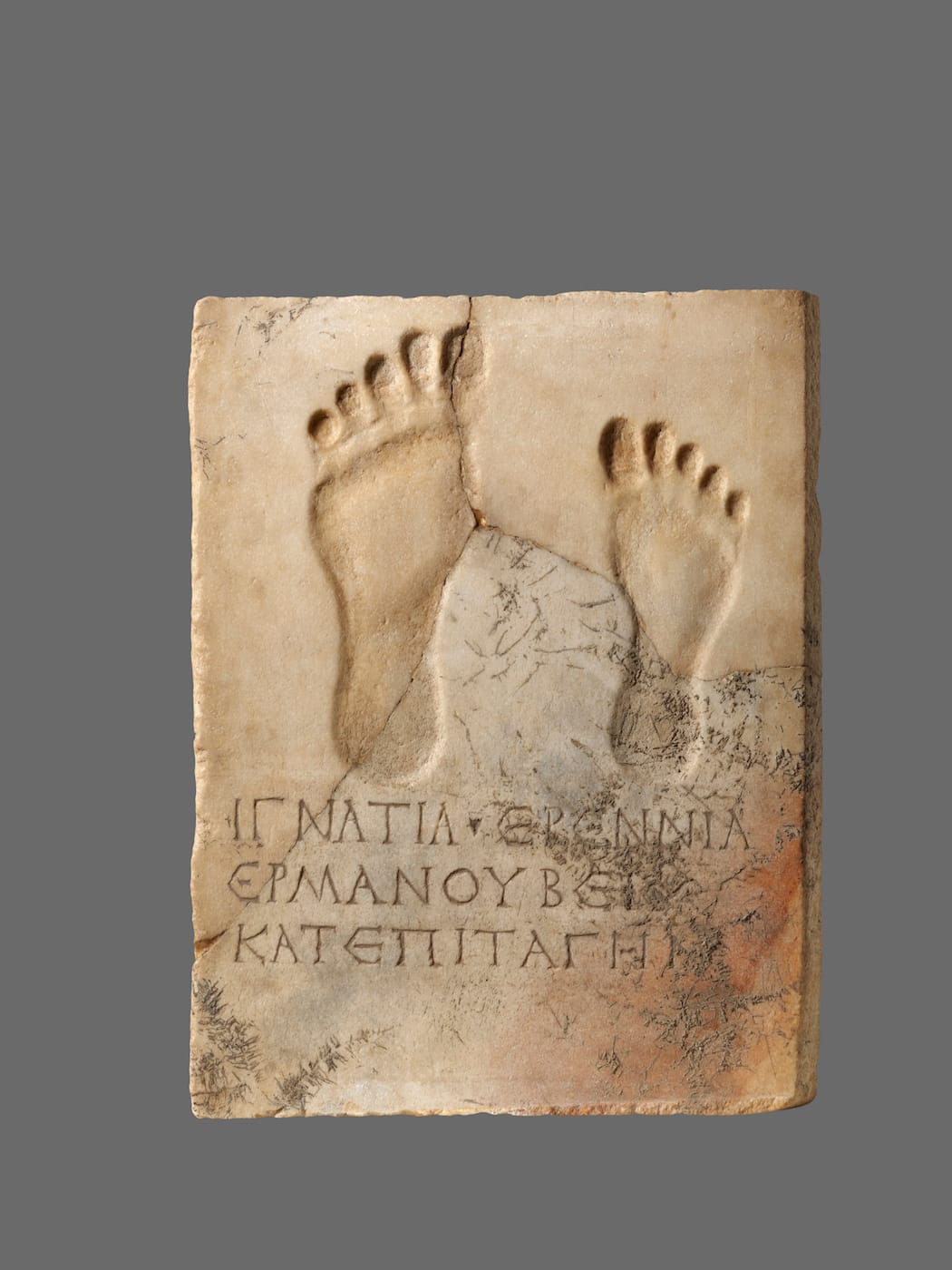
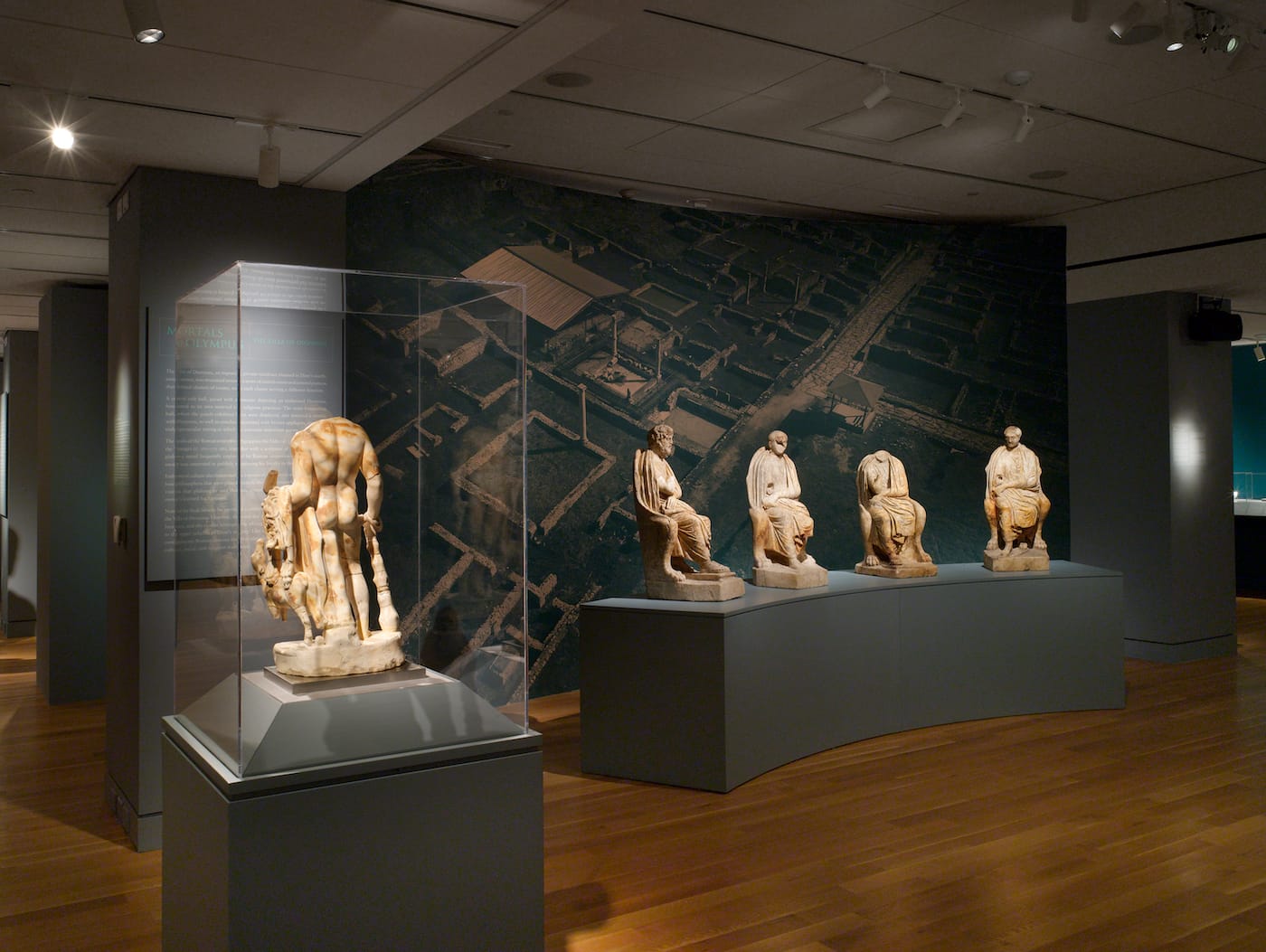

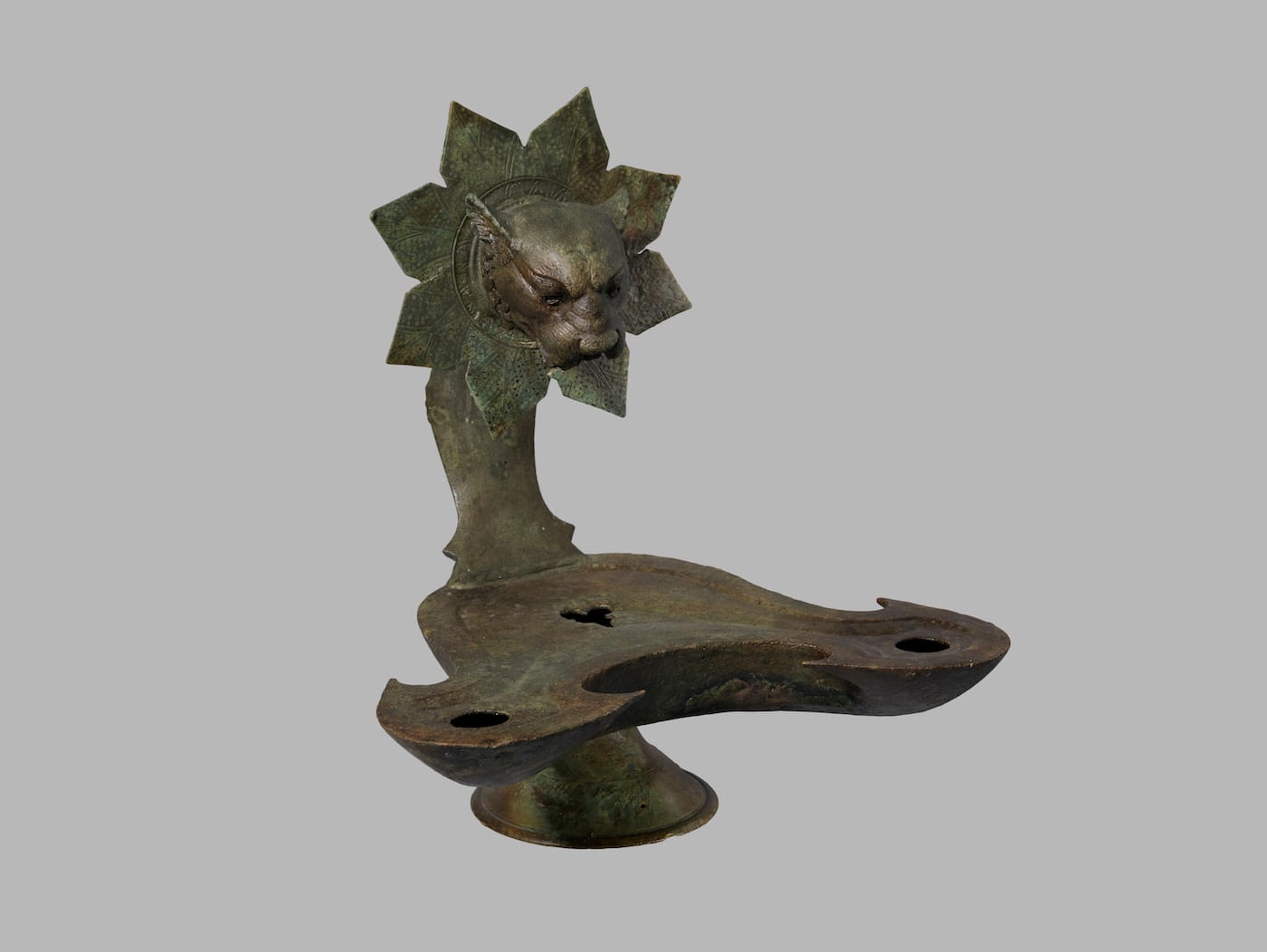
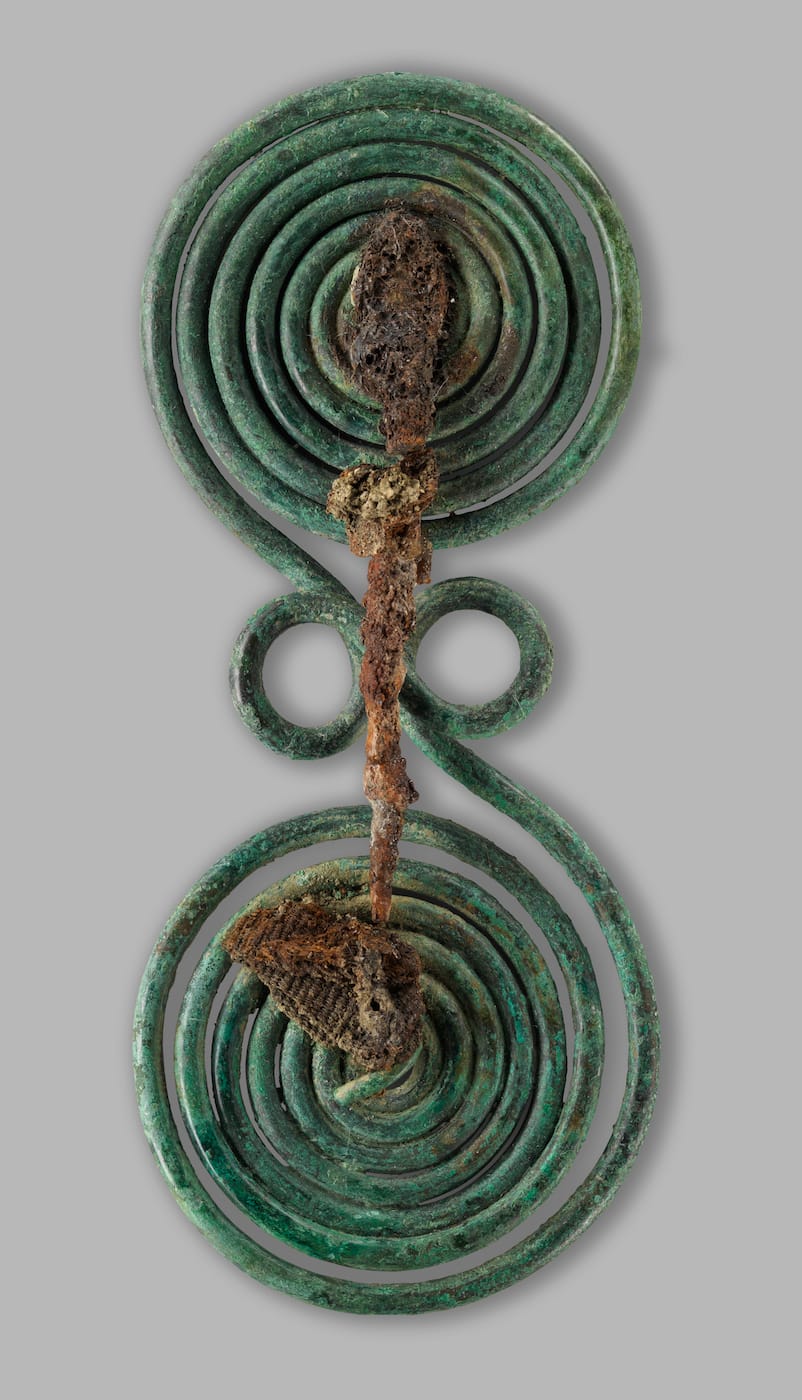
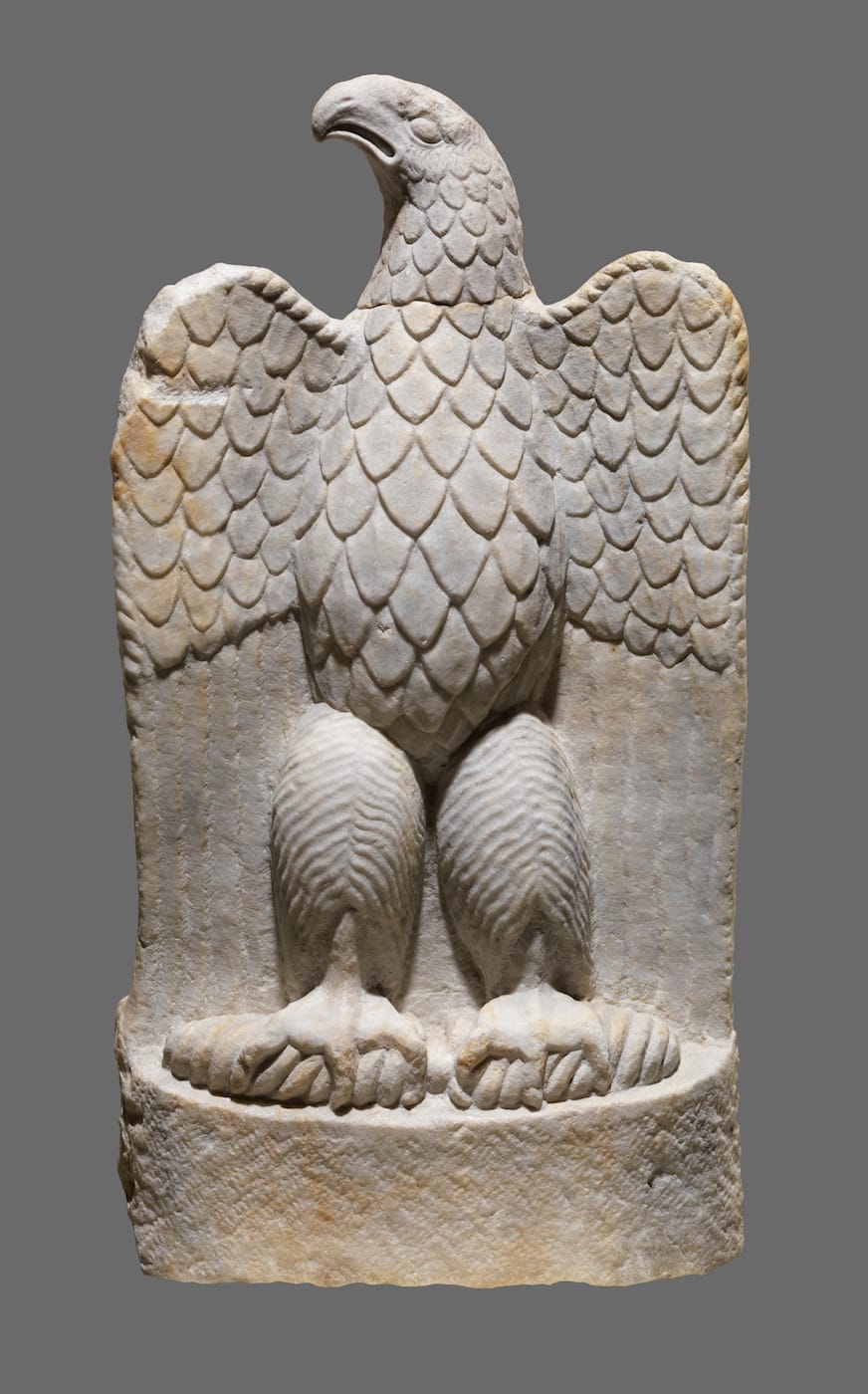
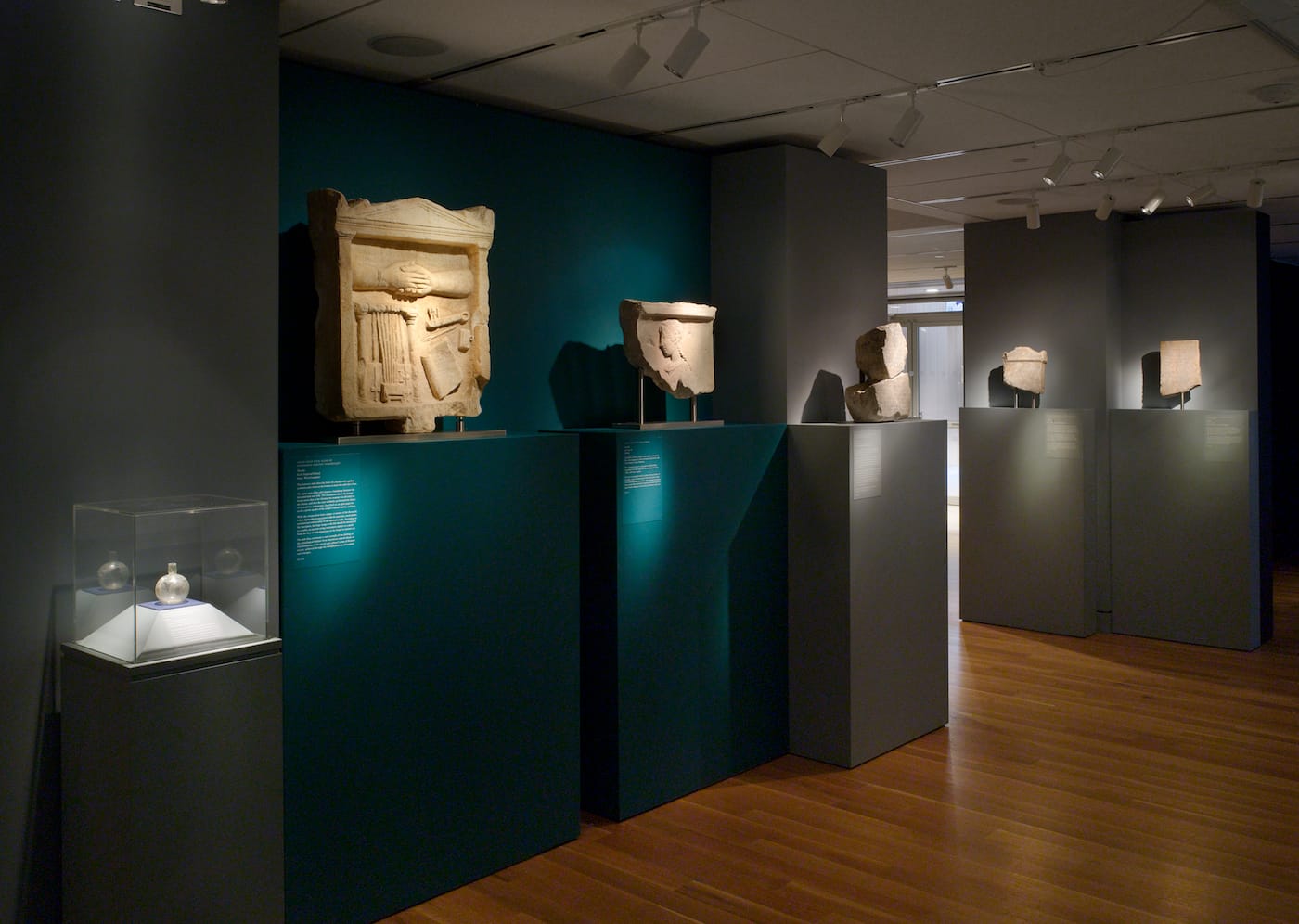
Gods and Mortals at Olympus: Ancient Dion, City of Zeus continues at the Onassis Cultural Center NY (Olympic Tower, 645 Fifth Avenue, Midtown East, Manhattan) through June 18.





